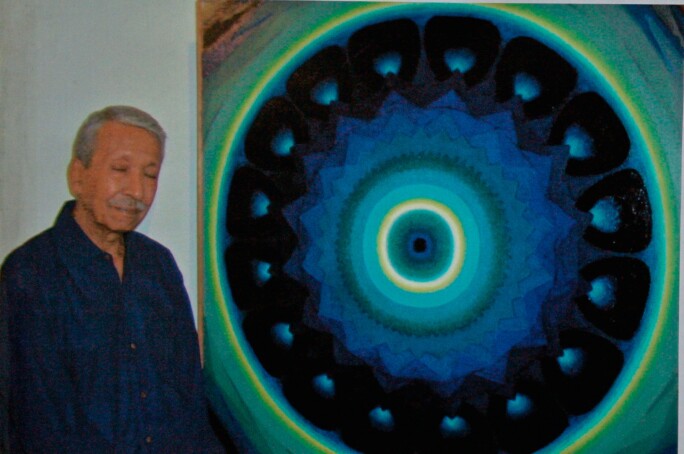The present lot, a luminescent, color-filled canvas, is a classic example of Biren De’s most important work. De is best known for his ‘Neo-tantric’ themed paintings that attempt to merge Hindu and Buddhist practices with modernist principles. An absorbing composition that radiates energy from within, November from 1997 is testament to the power of De’s visual language.

Image courtesy of the current owner
It was during a trip to New York in 1958 that De was exposed to Abstract Expressionism which sparked his interest in abstraction, and his association with Ajit Mookerjee after his return to India began his interest in Tantric iconography. 'De’s familiarity with Mookerjee’s collection of Tantric art contributed a great deal to the development of his new abstraction in the 1960s. Even before the publication of Mookerjee’s Tantra Art in 1966, De exhibited his new iconography in a solo show at the Kumar Gallery, Delhi, in 1964' (S. Bean, ‘Biren De’, Midnight to the Boom: Painting in India after Independence, Thames and Hudson, London, 2013, p. 82).
De’s work has been shown at a number of prestigious exhibitions and venues including the Salon de Mai, Paris (1951); Sao Paulo Art Biennial (1961); Venice Bienniale (1962); Ten Contemporary Indian Painters, Massachusetts Institute of Technology, Cambridge (1965); Contemporary Indian Art, Royal Academy of Arts, London (1982); Neo-Tantra: Contemporary Indian Painting Inspired by Tradition, University of California, Los Angeles (1985). His works have been acquired by distinguished institutions such as the Museum of Modern Art, New York, National Gallery of Modern Art, New Delhi, the Berlin State Museum, the National Gallery, Prague, amongst others.